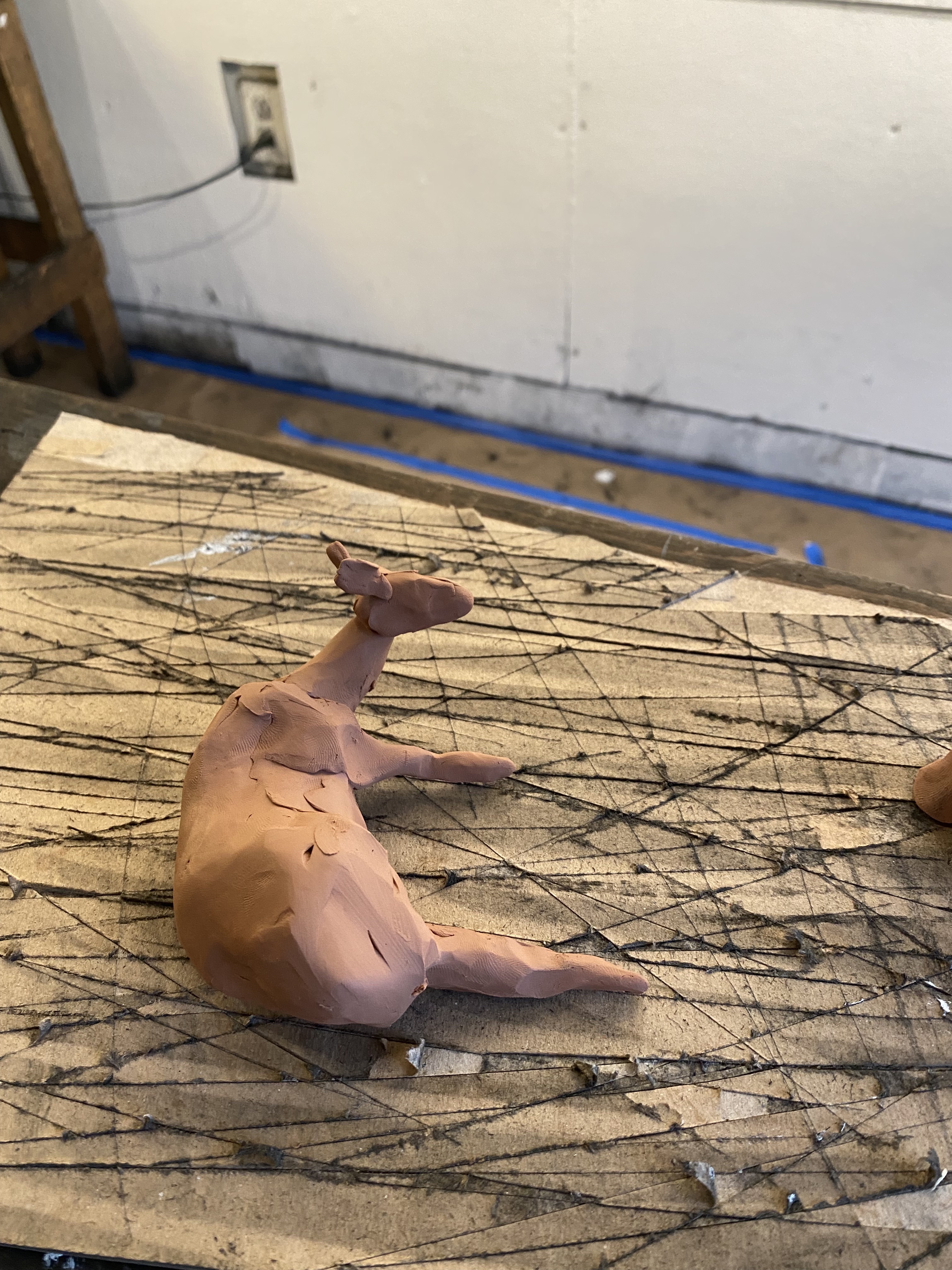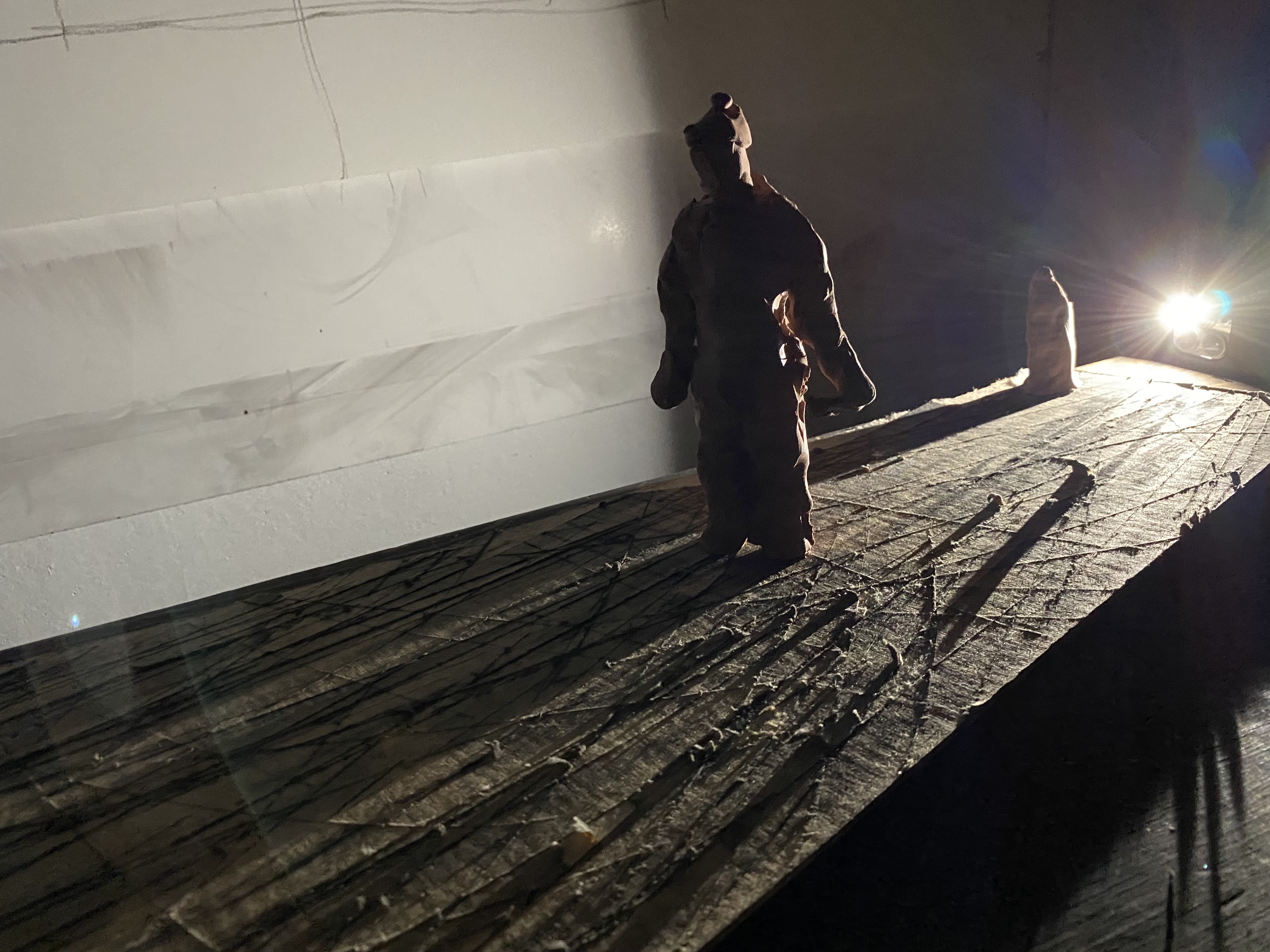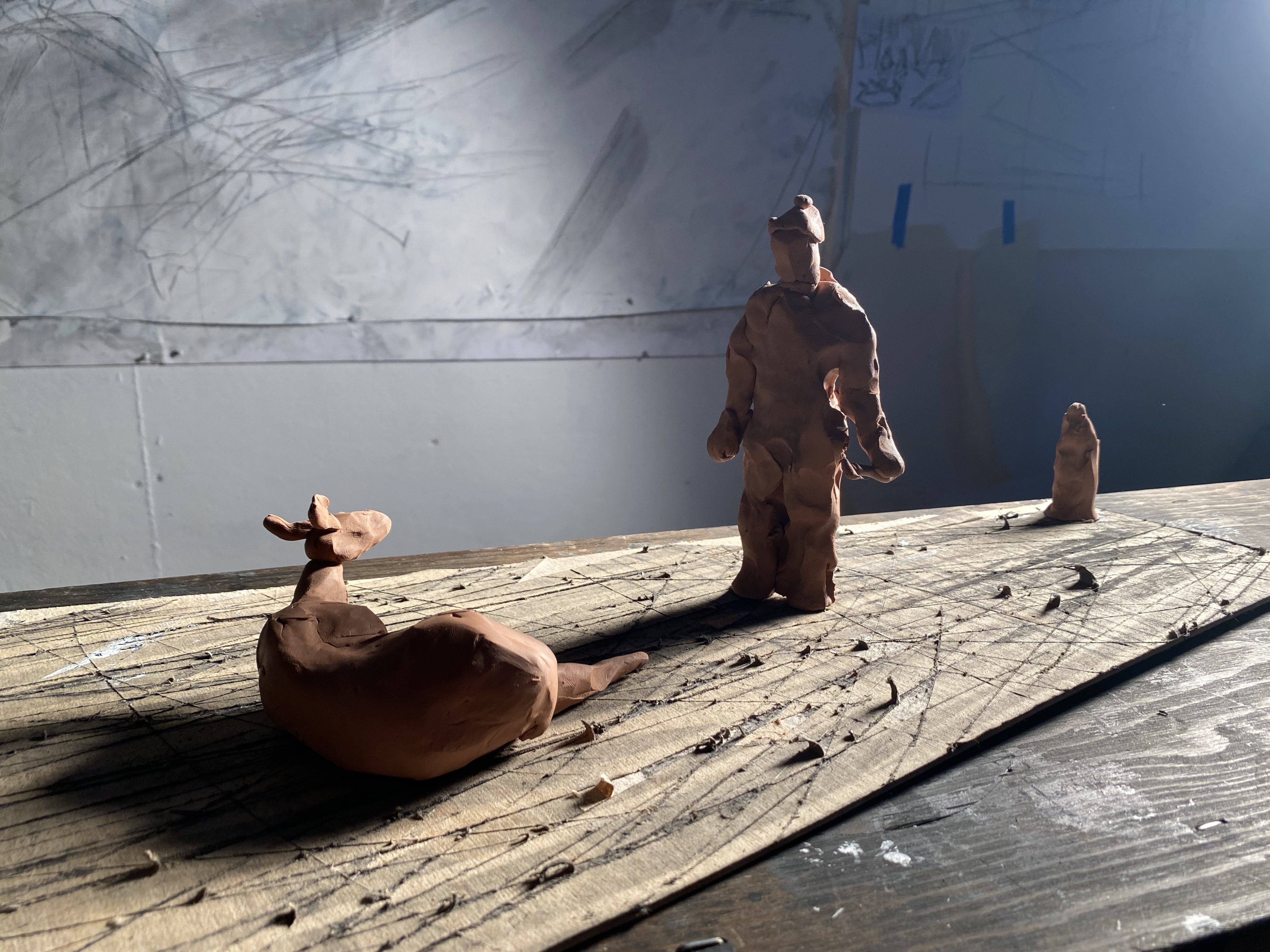 drawing marathon | wintersession 2022
drawing marathon | wintersession 2022gesso and graphite powder on linen canvas
60” x 40”
Primarily an experiment in materials and methods, Headlights imagines a true story shared with me by a family friend of rural Maine in layers of gesso tinted with graphite powder and applied with a pallet knife and other tools to explore texture, perspective, light, and shadow for dramatic figuration. The composition engages what has become a more regular occurrence: a Mainer stops to help a seasonal resident off-season who has just hit a deer on the road leaving town. While a hunter’s delight, signage indicates the menace of species overpopulation. The helper pulls a hammer from his tool box and begins “taking care” of the situation.
Studies (below) informed the tunnel-like experience of driving northeastern rural roads at night and in winter; the etched, scraped, and pushed gesso layers enhance the several confrontations: the local (foreground) intersecting with the man “from away” (background), hesitant, unprepared, hoping the hammer will not land in his hands. A tragic comedy emerges: modern man and his machines in conflict with nature. The doe gazes acquiescently away from the men who will decide her fate and salvage her remains, a spectacle.




epilogue
yale center for british art, new haven, ct | september 20, 2022
yale center for british art, new haven, ct | september 20, 2022
Sometimes a work gains relevance long after the process of its making from the maker’s post-doings. In this case, a visit to the Yale Center for British Art nearly four months after “crits” brought me into contact with George Stubb’s Freeman, the Earl of Clarendon’s Gamekeeper, with Dying Doe and Hound (1800). In this night scene’s mercy killinghe, the gamekeeper’s hand grips a knife, while a rifle rests almost imperceptibly on the ground behind him. Alongside Cecily Brown’s The Hound and the Horse’s Hooves (2019), the two paintings echo the mingling of old and new befitting Louis Khan’s skylit oak paneled and concrete buttressed Library Court. I am reminded of my own efforts of reinterpretation and transposition of the traditional Western genres of landscape, sport, and animal painting. Richard Long’s conceptual floor-level installation Quantock Wood Circle (1981) completed the intellectual tableau.
